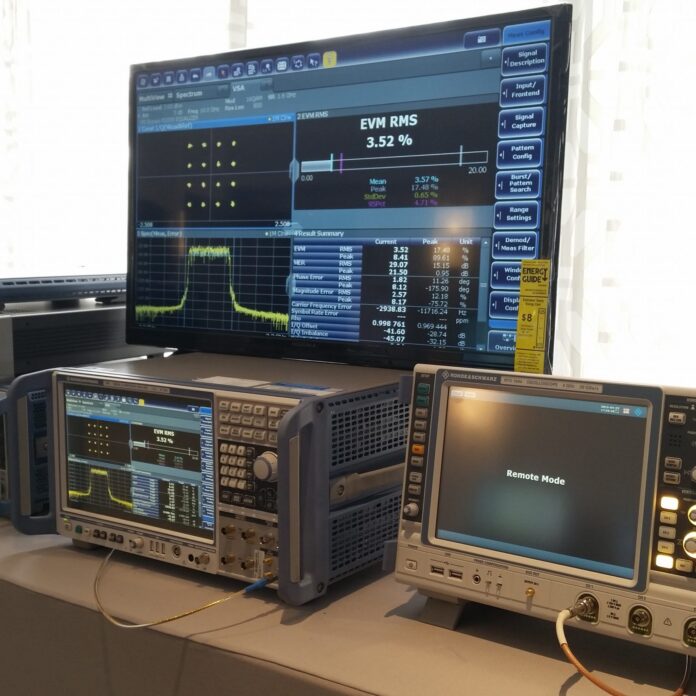DEL MAR, Calif. – The continued evolution of LTE is providing fertile ground for the testing industry, and features including carrier aggregation and Voice over LTE were the focus of the first day of this week’s LTE Innovation Summit.
Olga Shapiro, program director for the test and measurement practice at Frost & Sullivan, opened the conference with a look at trends that are fueling network evolution and by extension, the testing market – including virtualization, the “Internet of Things” and the early days of “5G,” as well as the continued demand for wireless broadband and growing LTE smartphone market. Shapiro said that the global market for LTE test and monitoring equipment is expected to reach $6.2 billion in revenue by 2021, reflecting a compound annual growth rate of 14.5% from the $3.4 billion in revenues generated in 2014.
The LTE-Advanced test equipment market is anticipated to hit $1 billion in revenues within the same timeframe, up from about $250 million in 2014. Meanwhile, Shapiro said that the voice-over-LTE testing and monitoring equipment will reach an estimated $1.5 billion by 2021, growing even faster than overall LTE market with a compound annual growth rate of more than 16%.
Carrier aggregation advancements also received significant attention at the summit. CA saw its first, limited commercial deployments by domestic operators including AT&T Mobility and T-Mobile US last year with two-component-carrier implementations. One of the LIS technical tracks featured a detailed breakdown of the messaging involved in three-component carrier CA, and a live demonstration of throughput up to 450 megabits per second for a Category 9 device that included the device being switched between up to three component carriers of varying sizes in order to observe the differences in throughput.
Rohde & Schwarz and Prisma Telecom Testing also re-created a demo of 4CC CA that they featured at Mobile World Congress earlier this year, which takes the CA conversation even further than the two- and three-component carrier testing that has already been achieved. Paolo Marini of Prisma discusses the demo and takeaways from his presentation on stress-testing VoLTE in the following interview:
VoLTE testing has advanced apace with the ecosystem as deployments have begun. Marini shared the results of VoLTE testing that put the technology under stressful network conditions, such as registration storms where many devices link to the network simultaneously – the kind of situation that would occur as a plane landed and many users turned on their devices at once. In general, Prisma’s testing found that the dedicated bearers that give VoLTE priority within the network protected users well from multiple types of challenging network conditions.
Additional VoLTE-related testing included a demonstration of voice quality testing on a live VoLTE device along with an overview of the uses of PESQ and POLQUA for voice quality testing.
The summit tackled a number of other LTE-related topics, including:
- Keith Radousky, CTO of Quintel, presented field trial data on the evolution of antennas and multiple-input, multiple-output, including a tilt technology that handles uplink and downlink separately in order to optimize coverage versus capacity that the company hopes to test out this summer.
- Vuk Marojevic of Virginia Tech presented new research on interference between LTE and radar systems at 3.5 GHz that showed that sites separated by 4 kilometers and some screening forest were able to operate at full capacity without impacting one another. The research is particularly relevant in light of a recent Federal Communications Commission announcement that it is significantly shrinking the 200-mile coastal exclusion zones where 3.5 GHz radar use has been protected in order to make more spectrum available in a tiered, shared access model at 3.5 GHz. Marojevic also covered vulnerabilities of LTE systems.
- LTE for public safety and the FirstNet national-network-to-be also came under discussion, from device requirements and the issues of dealing with a limited market with very specific, ruggedized needs described by Jim Harper of Elektrobit, to testing done by P3 Communications on live Band 14 sites on the JerseyNet network in New Jersey – one of the a handful of pilot projects that have been experimenting with LTE for public safety under the auspices of FirstNet.
The LTE Innovation Summit continues today. For live tweets from the show, follow @khillrcr and look for #LIS2015 on Twitter.

